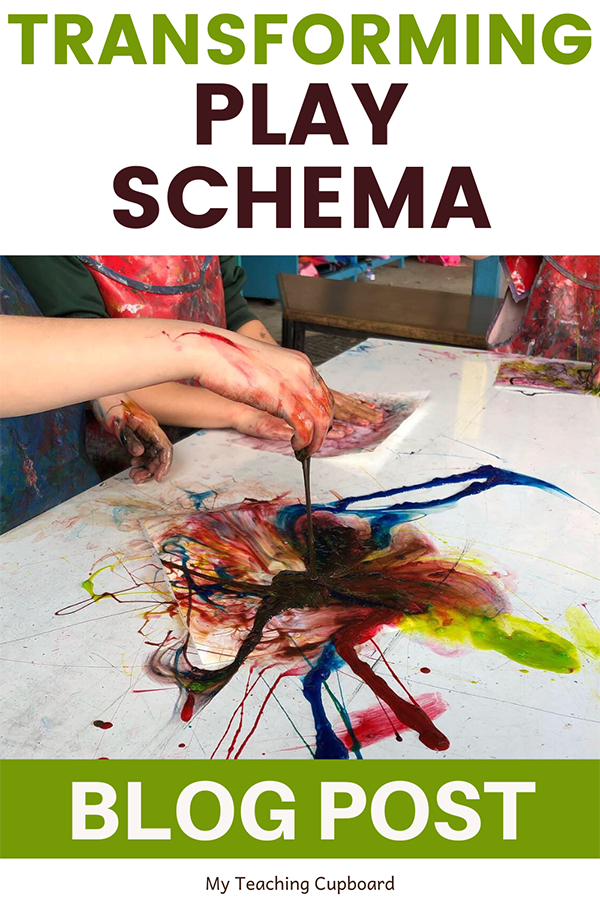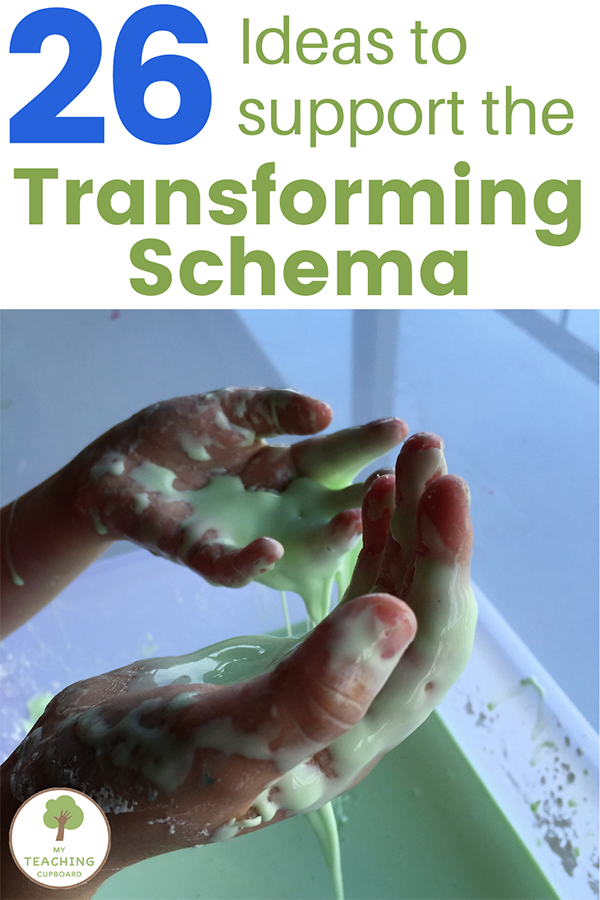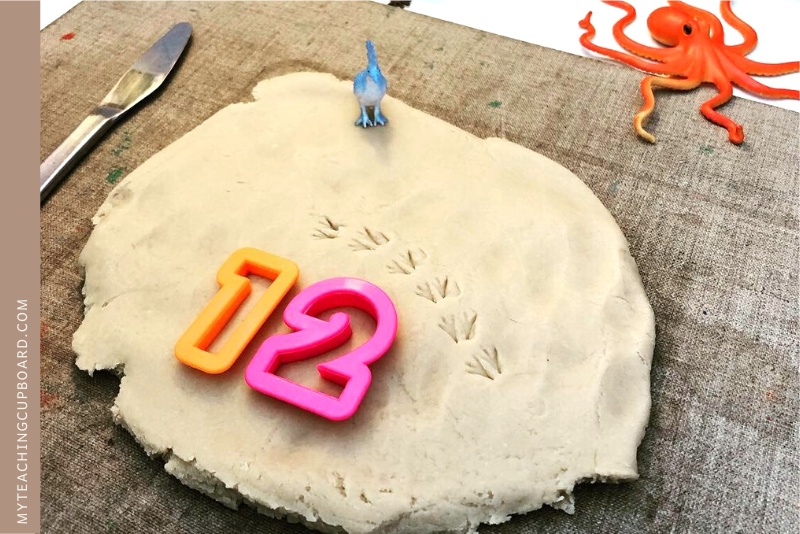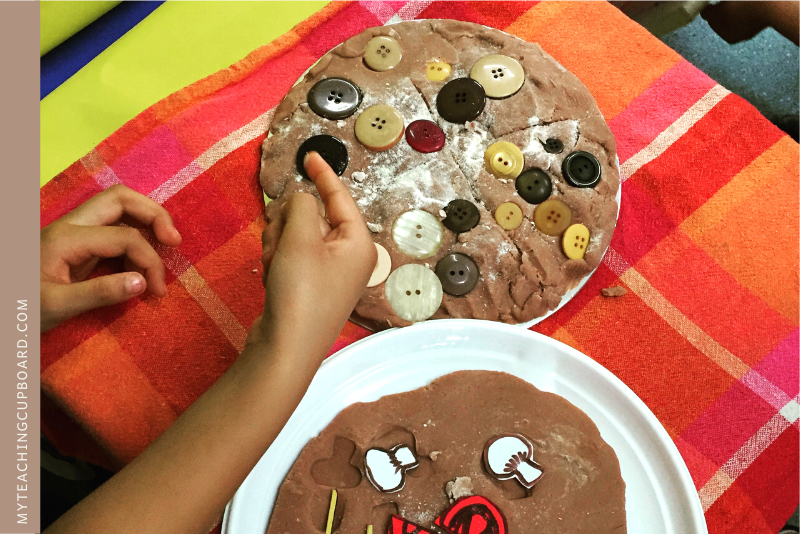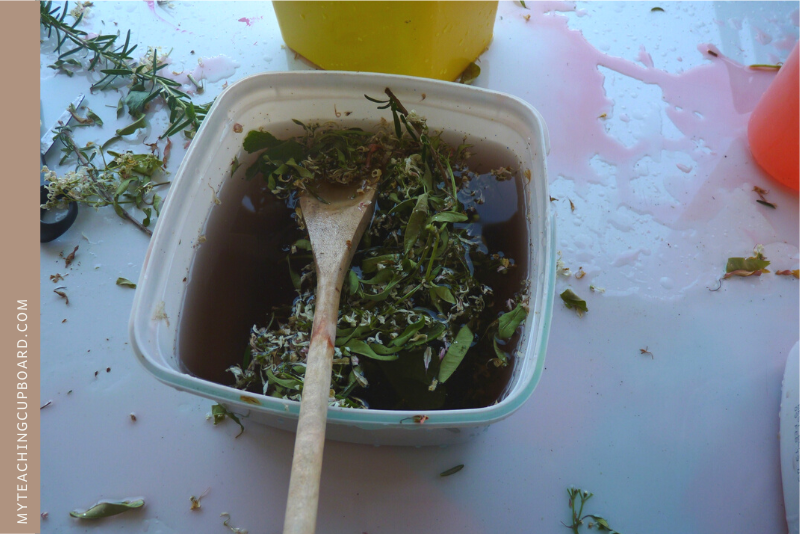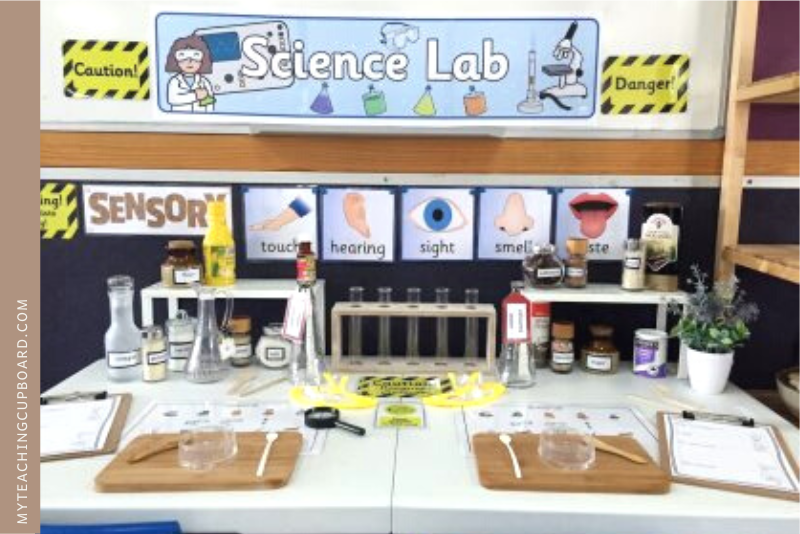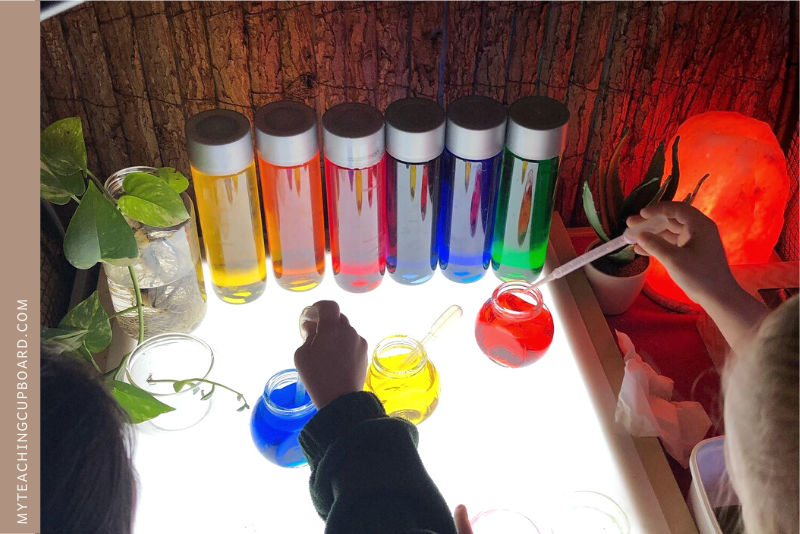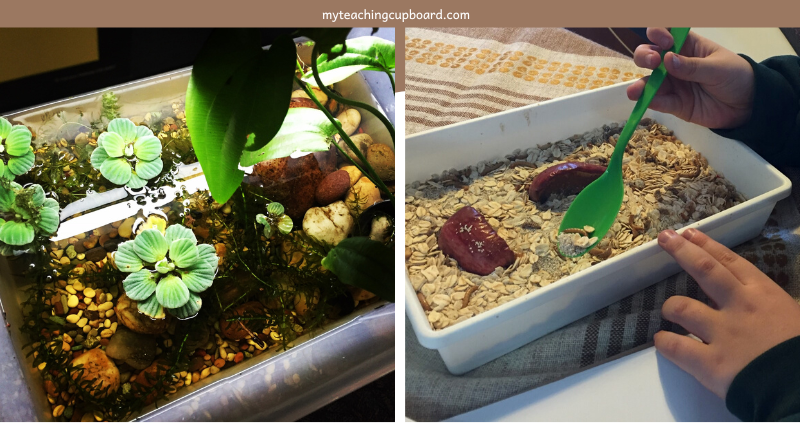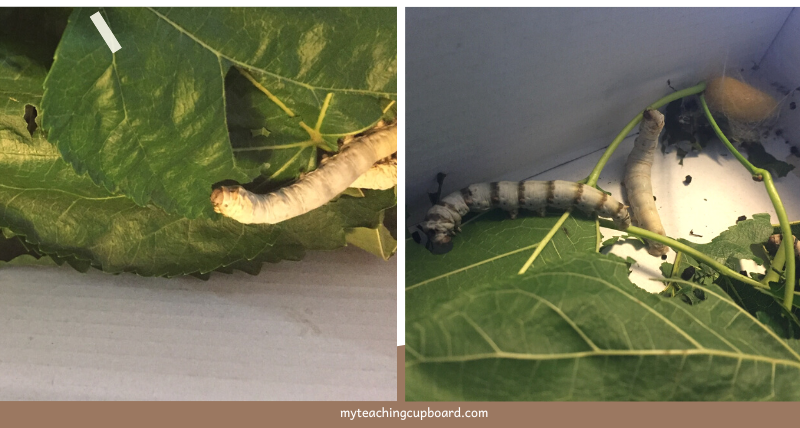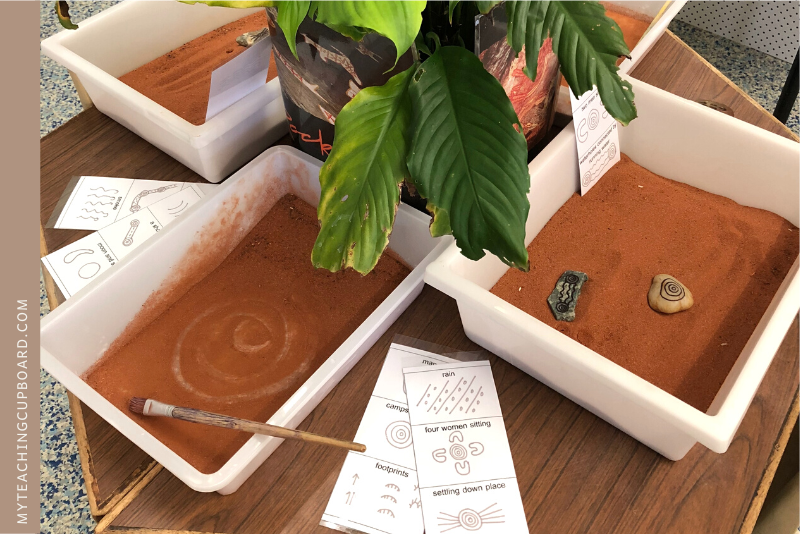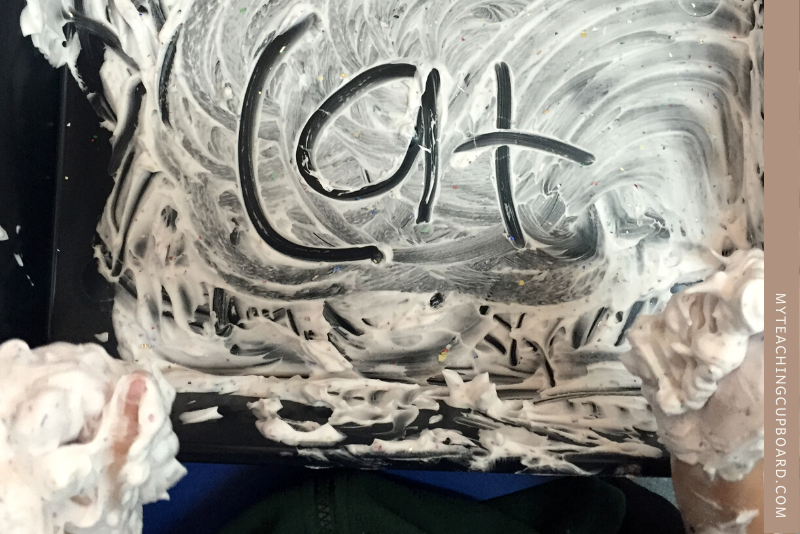The Transforming Schema
The transforming schema is all about change and how things transform in substance or appearance. Children interested in this schema will be fascinated with combining and changing materials. If you have children constantly mixing sand with water or drawing and painting on their bodies, you might have children developing their transformation schema.
In this blog post, you will discover exactly what the transformation schema is, why it needs to be supported in your classroom, and then explore a number of activities that will help you to do this through hands-on playful investigations.
What Is a Play Schema?
Play schemas are the repeated patterns of behaviour children use to explore and learn more about their world. Young children are constantly trying to make sense of their world and they do this by using their play schemas to explore and investigate the world around them. If you are looking to support students to develop their transforming schema, offering hands-on play based learning experiences is your best strategy.
Children’s play schemas will change over time. Their schemas become more and more sophisticated each time they face a new learning experience. Through repeated schematic play, children will use their existing knowledge to build new understandings and develop their schemas.
There are nine commonly observed types of schemas in play. The transforming schema is one of these nine along with connecting, orientation, trajectory, rotation, enveloping, enclosing, positioning and transporting schemas.
In education, schemas are recognised as a vital part of children’s cognitive growth and learning. Understanding play schemas is vital for any early childhood educator. If you would like to learn more about play schemas and schematic theory, you should check out this blog post: A Guide to Play Schemas in Early Childhood Education
The Guide to Play Schemas in Early Childhood Education is a general guide to play schemas in early childhood education and explains in detail what play schemas are. It also explains how you can use play-based learning to effectively support the nine play schemas the children in your class will be exploring.
Schematic play relates to how a child is playing and exploring the learning resources and environment. It isn’t a specific type of play like dramatic play or sensory play. You will observe early childhood schemas of play happening in all areas of your classroom.
For example, you might notice children demonstrating the transforming play schema in your art area. They will be the ones mixing all the paint colours together. You might also notice these children gravitate toward messy play and have a keen interest in making potions or playing at a mud kitchen. These types of activities are all extremely engaging activities for children developing their transforming schema.
While these may seem like different forms of play in very different scenarios, they are in fact examples of the same schema. Once you’ve observed a child displaying a specific play schema, you will very often notice the child repeating that same action schematically using a range of different objects and sometimes even their own bodies.
Why Are Play Schemas Important In a Play-Based Classroom?
Understanding play schemas and being able to pinpoint the ones your students are developing is critical to the success of your early childhood classroom. When you become aware of the play schemas your students are developing you will:
Understand your students and their developmental needs.
Better understand how children learn.
Be able to tap into your student’s interests.
Increase engagement.
Know how to encourage your students to be more curious.
Deepen the learning and the intensity of your student’s play.
Make the right observations to inform your planning.
Be able to easily differentiate the learning experiences you offer.
When you understand play schemas and use them to help you observe and document what the children in your class are doing during investigative play time, you will not only gain insights into your children’s passions and interests but you’ll be armed with the information you need to be able to adapt the curriculum and plan for appropriate engaging and purposeful learning experiences.
Understanding play schemas can also help you understand what can sometimes be seen as undesirable classroom behaviour. For example, you might have a child constantly painting their hands instead of the paper you have so thoughtfully provided in your art area. This would be a bit annoying for you and the other children trying to work there. This behaviour might be seen as undesirable but when you understand this behaviour is coming from a child exploring the transforming schema, you can set up a learning invitation to accommodate this schema.
When you understand why certain behaviours are happening, you come to realise children do not simply misbehave. There’s always a reason for desirable and undesirable behaviours and sometimes play schemas can be that reason.
Being able to recognise and use play schemas is crucial to the success of any play-based classroom.
What is The Transforming Schema?
Children building their transformation schema are interested in change. They will be keen to explore any objects changing in appearance or substance. Children exploring this schema enjoy mixing different materials and substances together to see if they can change an object’s colour, shape, or consistency. Sometimes these children might be interested in lifecycles and how living things transform or change too.
These children are developing an understanding of cause and effect. Sensory play, play dough, and mixing paint or mud kitchen ingredients will be highly engaging activities for these students. Most of the science experiments you do, especially in Chemistry, are going to be perfect for children developing the transformation schema.
What Are Children Using the Transforming Schema Learning?
Children exploring their transforming schema will be examining the properties of materials and how materials change. As they do this they will be:
Developing fine motor skills
Learning about cause and effect
Using their senses to make scientific observations
Developing creative and critical thinking skills
Building science and math skills like predicting, estimating, problem-solving and measuring.
What Vocabulary Supports the Transformation Schema?
Change, Transform, Material, Object, Appearance
Mix, Stir, Combine
Size, Position, Shape, Texture, Property
Absorbent, Waterproof, Liquid, Solid, Gas
26 Hands-on Activities to Support a Transforming Schema in the Play-Based Classroom
Because children exploring their transformation schema will be fascinated with mixing and combining materials, there are many opportunities to offer hands-on learning through play invitations to support this schema in a play-based classroom.
In kindergarten and first grade, children should have access to a variety of sensory play experiences and be offered a wide variety of materials that can be changed and transformed.
Educators need to consider how and where these resources are offered too. It is important to understand and follow your health and safety guidelines as well as think about how the learning spaces will be cleaned and re-set when planning and implementing activities for the transformation schema.
Cooking
Cooking is a valuable math activity. Lots of measuring and counting happen when children are given the opportunity to cook at school. Children exploring the transforming schema will love mixing the ingredients and noticing how they transform into something they can eat.
Material World Science Unit
The foundation stage science unit on materials and their properties is going to be of particular interest to children exploring their transformation schema. This science unit is all about observing materials and learning how they can be physically changed in a variety of ways.
In this unit, students will identify familiar objects and the materials they are made from, describe the properties of the materials, and share ideas about how water and wind affect materials in different ways. Any students interested in change and how materials can be transformed will love this unit.
I have designed 10 PowerPoint Science lessons and a corresponding Student Journal for this unit. If you are teaching this ACARA Science unit you might be interested in checking it out. It has everything you need to teach the Australian Curriculum Materials Unit for the Foundation Stage.
The lessons and the journal activities in this bundle have been carefully aligned to ACARA and all the content descriptors from the Foundation Chemical Sciences strand are covered. Each page in the student journal corresponds with each of the 10 PowerPoint lessons.
Your students will be able to use the journal to record and represent their knowledge and understandings and it could also be used as evidence of learning and to inform assessment grades too if you want.
Sensory Play
Most transforming activities happen in sensory play. Children learn everything about their world through their senses so it’s no wonder sensory play is so popular in early childhood education.
It can sometimes be a messy play experience, but any children interested in the transformation schema will benefit immensely from sensory play. In fact, sensory play is a common type of learning activity found in nearly all of the nine play schemas.
Here are some of the sensory play activities we have used in our classroom to support the transforming schema:
Green Goop
The children with a transformation schema just love playing with goop. It’s easy to make. Just add a little water to cornflour. Colour the water green with a few drops of food colouring if you want to make green goop.
We always make green goop when we are learning the /g/ sound.
Goop is fascinating to explore because it is continually transforming from runny to hard. It’s so much fun to manipulate and the children attracted to changing materials will especially enjoy this activity.
Cloud Dough
Cloud dough is another favourite with children exploring the transforming schema. To get the full transformation benefit, include the children in the making process.
To make this soft no-cook dough you only need two ingredients – cornflour and hair conditioner. The more conditioner you add, the more dough like your mixture will be. Adding half a cup of conditioner to each cup of cornflour will give you a dough similar in consistency to play dough.
Adding about a quarter of a cup of conditioner to each cup of cornflour will give you a super soft and light powdery mixture that clumps together when squeezed but will fall apart easily too.
To add another transforming aspect to the experience, you can colour the dough by adding a few drops of food colouring to the mixture.
Water Beads
Water Beads start out as small hard beads but slowly transform and expand into large soft balls when you add them to water. They come in a variety of colours and are quite magical to play with.
About 10 grams of beads will make around 1 litre of expanded beads. They are jelly-like and children with the transformation schema will love squashing them all up just as much as they like making them.
For an added sensory experience and to alter their appearance, try adding some glow sticks or battery-operated fairy lights under the beads. Your students will love it.
Playdough
Playdough is another sensory play activity but I think it’s so important, it deserves a dedicated section in this blog post. 😊 I’m a big fan of playdough. You can use any malleable substance like clay or plasticine and still get similar educational benefits. These malleable substances are the ultimate fine motor activities and are always very popular with young learners.
Playdough is such a versatile learning tool, we always have a dedicated playdough table in our classroom. Here are some of the ways we have used play dough to stimulate learning through the transformation schema:
Playdough Prints
To support children with a transforming schema, add loose parts like corks, buttons, stamps, or toy plastic animals to your playdough area. The children will enjoy using items to make marks in the dough transforming its appearance.
To link this activity to number concepts in maths, you might be interested in my Animal Tracks Ten Frames. You can display these with playdough to encourage children to count and record the number of footprints the different animals make. This is a great way to include some skip counting and number pattern learning opportunities.
Properties of Playdough
The grade one Chemical Sciences unit on materials and their properties requires students to explore how everyday materials can be physically changed in a variety of ways according to their properties. This unit is all about physically changing materials so it is a highly engaging unit for children working on their transformation schema.
A playdough table is a great place for students to learn about actions to physically change materials so I created a set of illustrated vocabulary cards for my students to help them better understand all the ways we can physically change playdough. Just click this pic 👇 if you would like this set for your classroom too.
Making Playdough – Procedural Texts
Allowing children to make their own playdough is a fantastic opportunity for them to learn more about their transformation schema. If you add a recipe for them to follow, you will be helping them to learn about procedural texts and developing important measuring skills needed for maths learning too.
Loose Parts Play with Playdough
Adding loose parts to playdough will not only give your students numerous opportunities to transform the playdough but it will promote creative thinking, counting, sorting, and pattern making too.
To encourage this type of learning, some of the loose parts you might like to add are candles, popsticks, matchsticks, glass gems, buttons, Mr Potato Head pieces, feathers, or counters.
Loose Parts Play
Don’t limit your loose parts play to just the playdough area. Loose parts can and should be added to all your investigation areas
Children interested in the transformation schema will creatively transform loose parts into familiar everyday objects. Wood slices and counters can become food in the home corner. A block of wood can transform into a phone or a camera.
When you notice the children in your class transforming loose parts into familiar everyday objects, you can be sure these children are exploring the transformation schema.
If you are interested in discovering more about loose parts play, I have quite a few blog posts on this topic. Are you new to loose parts play? This blog post - Loose parts play is a good one you might like to check out.
If you would like to discover how to set up Inspiring Loose Parts Provocations and learn about other ways you can use them in your play-based learning areas, you might like to check out this blog post - Loose Parts Invitation to Play - How to Set up an Inspiring Loose Parts Invitation to Play
In the free resources library, I also have a list of over 150 different loose parts you can collect and use in your investigation areas. You can grab this list for free HERE.
Mud Kitchens
Mud kitchens are a must if you have children developing a transformation schema. If you are interested in observing children with this schema, head to the mud kitchen!
Our permanent mud kitchen is a bench in the sand pit out in the playground. Mud kitchens promote messy play and so you certainly don’t want one set up in a hard-to-clean area like your carpet space. If you are lucky enough to have a verandah or courtyard as part of your classroom, these would be great places to set up a mud kitchen.
The usual materials offered at a mud kitchen include sand, soil, bark chips, plant cuttings, stones or gravel, and of course water! Add a variety of tools and utensils for the children to mix, stir and pretend to cook with. Old saucepans, cups, bowls, spoons, muffin and pizza trays, whisks, and scissors are some good utensils to start with. Think about your own kitchen. Any utensils you use whenever you are cooking are also going to be great additions to a mud kitchen.
By the way, a mortar and pestle is a great addition to a mud kitchen. The children will love grinding up leaves and bark to transform them into a fine powdery mix. This is a fantastic activity for developing fine motor skills too.
Potions and Kitchen Science
An extension to the mud kitchen concept and an area that you can set up inside your classroom is a potion-making or kitchen science table. These learning experiences can easily be linked to the Science unit on the Properties of Materials.
These two learning experiences are highly engaging and will help your students to really explore how transformation works.
Perfume Making
Perfume making was inspired by an episode of Peppa Pig I happened to watch with my grandkids. You can read all about this engaging learning provocation here: Perfume Provocation. Basically, I provided some scented flowers, herbs, oil, rubbing alcohol, and water for the students to mix and transform into their very own perfume.
I created a little procedural text chart or the students to follow and a recipe sheet so they could record their perfume creations. You can download all the Perfume provocation printables for free HERE in the FREE Resources Library.
Kitchen Science Chemistry Lab
Well, this investigation area is so popular we have to use a booking sheet to ensure every student gets a chance to work there.
It’s quite easy to set up and very, very messy. I quickly discovered it was essential to put some strict cleaning-up rules in place. To set up this investigation area, I provided ingredients from the pantry for students to measure, mix and observe. Each week I added new ingredients to sustain interest and provoke new investigations. When our sound focus was /d/, I added detergent and for /m/, I added milk.
You can see some other photos of the setup and read more about it here on this blog post: Kitchen Science Chemistry Lab
Bicarbonate of soda and vinegar are the star ingredients in this chemistry lab. You’ll hear screams of delight when these two ingredients are added together. Chalk is another good material to offer. It can be turned from a solid chunk into powder with the help of a mortar and pestle or sandpaper. Experiment with adding different amounts of water to transform the chalk dust into putty or chalk paint.
Making Sensory Bottles
Making sensory bottles is another great transformation activity and closely related to kitchen science. Provide water and clear glue, hair gel, or oil for the children to mix and add to a tall clear bottle. You can use food colouring to colour the water and an oil-based colouring like one used to colour chocolate to colour the oil. Adding tiny materials like glitter, small beads or pompoms will create another way to transform the materials.
These calming bottles can adorn a classroom calm-down area when they have been finished. This way the transforming process continues. Whenever the bottle is shaken, the colours and contents will combine, but then separate again as they settle. Your students will love to shake up the sensory bottles and watch the materials mix and float around.
Mixing Colours
Mixing colours, whether it is done with paint, coloured water, or pieces of cellophane, is of great interest to children exploring their transformation play schema.
A light table will take this exploration to the next level. The light shining through the coloured materials highlights the transformation process. If you are opting for the coloured water mixing, supply pipettes for the students to transfer the water. This will cut down on the amount of water you need to supply and is also good for developing fine motor skills.
Mixing paint is very appealing to children interested in this play schema. Consider offering various types of paint – watercolours, acrylics, and powder paints can all be mixed and will give different results. I like to store our acrylic paints in small sauce bottles. These bottles give the children more control over the amount of paint they use and the squeezing strengthens hand muscles needed for pencil control.
Handprints
Children with a transforming play schema will very often like to paint and draw on themselves. This isn’t usually encouraged at school but at the start of the school year when we are learning All About Me – handprints are a traditional art activity in our classroom.
We start the school year reading a book called The Kissing Hand by Audrey Penn. This story is about a raccoon that uses a kissing hand to remind and reassure him of his mother’s love while he settles into school. Children starting school love this relatable story. To extend the kissing hand message, we make handprints on a printable Kissing Hand Poem Worksheet. If you are interested in downloading this worksheet, you can get it HERE in the Free Resources Library.
You can check out all of the activities we do in the first week of school in both kindergarten or prep, and for grade one here at this blog post: Planning For the First Week of School
Hapa Zome Flower Printing
This is a traditional Japanese printing technique. Place some fresh flower petals onto a wooden board or a log slice. Then gently cover the petals with a piece of white cotton fabric. Then you will need a hammer to repeatedly hit the cloth so the dye from the petals transfers into the fabric. You can create some really beautiful prints.
Planting Seeds
Planting seeds is a science activity offered to children when we are learning about plants in the Living Things science unit. The children enjoy the transformation process as they observe the seed growing into a seedling and then into a plant. This is a much slower transformation than others in this blog post but still very engaging for children developing their transforming schema.
We will often plant seeds again later in the year for the Geography unit when we are learning about special places. There’s no place quite so special as a garden. Even the act of weeding, digging, and watering a garden has transformational aspects the children will enjoy observing.
Life Cycles
Another slower-paced transformation activity is the observation of life cycles. Again, this is part of our content in the Living Things science unit. It’s important to choose living things with relatively quick life cycles for young students to observe. Some of the life cycles we have enjoyed are frogs, silkworms, crickets, and mealworms.
Dress-up Clothes in Home Corner
Dressing up is a great way for children to learn about transforming themselves. We don’t have a lot of dress-up clothes out at any one time. We have had more success with offering a small box of items and changing them around regularly.
Don’t just think about clothing for your dress-up options. Include hats, masks, scarves, bags jewellery, and glasses. Providing a mirror for the children to observe their transformations is also beneficial for those interested in the transforming schema.
Literacy, Art, and Mark Making
The transforming play schema can be explored by any type of mark-making. Mark making is the creation of different patterns, lines, textures, and shapes onto any material or medium. Don’t confine mark-making to just pencils and paper. Children can make marks using a variety of tools and on numerous surfaces.
Fingers, sticks, paintbrushes, and even loose parts are all tools children can use to make marks. They can make marks on traditional paper and card in all types of sizes, textures, and colours, but they can also make marks in clay and playdough, in sensory tray bases, on concrete, on blackboards and whiteboards, in fact, any surface can provide an opportunity to explore mark making.
Butterfly Squish Paintings
Butterfly paintings are a kindergarten favourite and that’s because it has its foundation in the transformation play schema. To make a butterfly with this squish painting technique, fold a piece of paper in half and then drop small blobs of paint over one side of the unfolded paper. To transform these paint blobs into a butterfly, fold the paper back in half and squish the wet paint around inside the folded paper. Then carefully unfold the paper to reveal a beautiful symmetrical pattern. When the paint has dried, you can draw and cut out your butterfly.
We like to do this activity when we are learning the /b/ sound, exploring symmetry in art and maths, or when we are studying butterflies as part of the science Living Things unit.
Rubbings
Rubbings are another magical transformation activity. This activity is great for integrating maths and art with the transforming schema. We make rubbings of coins in maths and rubbings of textured surfaces in art.
A rubbing is an impression of the surface texture of a material. To create a rubbing, you simply place a piece of paper over the surface and rub it with a soft pencil or crayon. The surface texture is magically transferred to the paper.
Well I thought The Connection Schema blog post was a long one but this blog post has turned out to be even longer! There are so many possible learning experiences involving the transforming schema. Now you know a little more about it, you will notice it popping up regularly in your classroom.
The transformation schema is a typical kindergarten and first grade play schema. That’s why many of our curriculum lessons and activities already support and use this highly engaging and educational play schema.
If you enjoyed this blog post on The Transforming Schema and found some useful ideas here, please consider sharing it.
Just CLICK the sharing box below.👇

